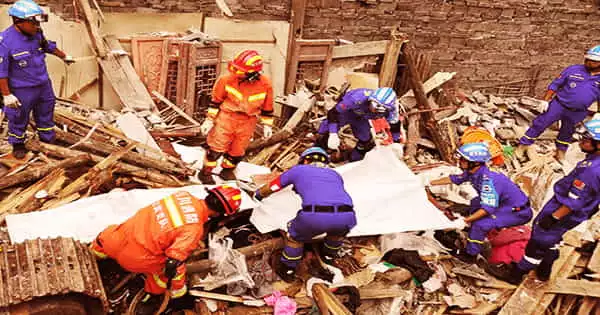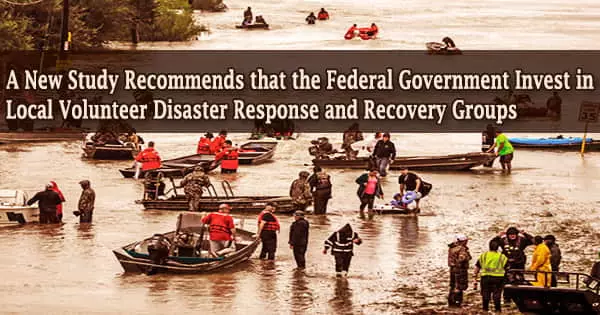2017 figures Natural catastrophes in Texas, Florida, Puerto Rico, and California have highlighted critical collaboration gaps and improved approaches to save money, time, and lives in the future.
Following a record year of billion-dollar disaster events in 2017 and more hurricanes and wildfires in 2018, a new University of Texas at Arlington study found that disaster recovery efforts were hampered by inconsistencies in non-profit resources across jurisdictions, particularly in areas where they were most needed.
The National Science Foundation financed the UTA study, which was published in the American Journal of Public Health. The study revealed that, despite inconsistencies in resources and coordination issues, non-profits, religious groups, and companies offered much-needed assistance and money, based on field research in Texas, Florida, Puerto Rico, and northern and southern California.
Daniel Sledge, the study’s co-author and a UTA associate professor of political science, said: “For me, the most important aspect of our findings was the massive variation across counties in terms of the ability of non-profits to respond to disasters. This was particularly striking in Puerto Rico, where many areas simply did not possess the non-profit and volunteer resources necessary to fill in gaps in what government was doing.”
The Community Emergency Response Team (CERT) program gives training in volunteer management and basic disaster response skills, arming people with disaster preparation information for disasters that may affect their community. Fire safety, light search and rescue, team organization, and disaster medical operations are among the disaster response abilities given.
This is a volunteer opportunity for anybody over the age of 18 who is interested. Non-profits, religious groups, and corporations are required to fill up gaps in the government’s ability to respond, according to FEMA’s National Response Framework.

About 76 percent of non-profits polled for the research said that if they hadn’t actively offered community services during and after the crisis, someone else might have given them.
The big takeaway from our research is that these organizations need help. They are expected to do extraordinary things. By funding local Voluntary Organizations Active in Disasters, the federal government can help to improve community capability to respond to disaster.
Herschel Thomas
Only 16.9% of those surveyed thought the government would have stepped in and supplied its services if the groups had not been active.
The study determined that volunteer organizations active in disaster, or VOADs, are crucial to successful post-disaster coordination and recovery after polling 115 non-profits involved in disaster response and conducting 44 hours of interviews. VOADs bring together non-profit organizations and officials from local and state government agencies to coordinate activities, share information, and focus efforts during and after disasters.
According to the findings, these collaborative groups were most successful when they were already in place before the crisis happened.
Local groups in Sonoma County, Calif., started creating a VOAD following the 2017 wildfires, but because it wasn’t operational before to the crisis, non-profits and other organizations had a difficult time coordinating their reactions to the flames.
Volunteer organizations in nearby Napa County, on the other hand, reported great collaboration with one another and with local authorities. As one non-profit representative said, “the key difference here is that we had the VOAD in place and they (Sonoma) didn’t.”
Prior to the wildfires, the county’s VOAD organization was established, with funding provided by a contribution from the local vintners’ trade association following a 2014 earthquake.
Herschel Thomas, the study’s co-author and UTA assistant professor of political science said: “The big takeaway from our research is that these organizations need help. They are expected to do extraordinary things. By funding local Voluntary Organizations Active in Disasters, the federal government can help to improve community capability to respond to disaster.”
Scott Robinson, the chair of the University of Oklahoma’s political science department, studies catastrophe politics, public and nonprofit management, and policy process theory.
Successful disaster and emergency response necessitate the involvement of a wide range of organizations, from the government to private to nonprofit, including those that may not consider themselves to be emergency response groups. The role of charitable and religious groups is typically underappreciated, according to this study by Thomas and Sledge.
Elisabeth Cawthon, dean of UTA’s College of Liberal Arts, said, “Dr. Thomas and Dr. Sledge demonstrate a keen understanding of the reactions of community organizations and policy-makers to environmental disasters. Through their timely research via the NSF Rapid Response Grant, Dr. Sledge and Dr. Thomas showcase CoLA researchers’ skill in identifying problems and suggesting practical solutions. Dr. Sledge and Dr. Thomas are to be commended for their work as individual investigators, as well as their mentorship of several undergraduate and graduate students in this important project.”
















